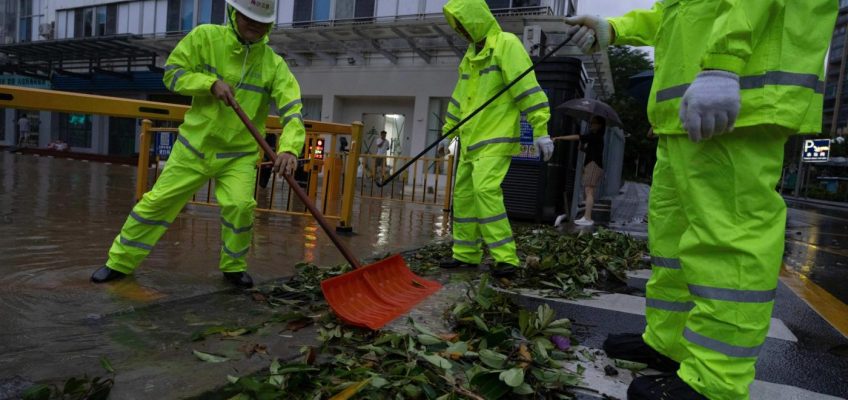By SIMINA MISTREANU
TAIPEI, Taiwan (AP) — Known as the strongest storm of the year in the world, Typhoon Ragasa churned through parts of the Western Pacific and slammed into southern China, whipping massive waves, triggering floods and leaving at least 27 dead in its wake in Taiwan and the Philippines.
Related Articles
Activist flotilla seeking to break the Israeli blockade of Gaza says drones attacked its boats
Ukraine’s president says the world is in ‘the most destructive arms race in history’
Is AI a threat to jobs? A ‘Tomb Raider’ affair poses the question
Iran’s president blasts US, Israeli attacks for dealing ‘grievous blow’ to peace as sanctions loom
Europe has a Russian drone problem. Here are ways it could be solved
The typhoon was moving west across southern China toward Vietnam after touching down on Hailing Island in southern Guangdong province on Wednesday afternoon. It earlier registered maximum gusts of 150 mph in the city of Jiangmen.
Here are some key facts about the typhoon, dubbed the “King of Storms” by China’s meteorological agency:
A super typhoon began over the Western Pacific
As it formed over Micronesia in the Western Pacific earlier this month, Ragasa rolled over unusually warm ocean waters, gathering strength. By Monday, it had been labeled a super typhoon, packing maximum sustained winds of 165 mph.
Meteorologists classify tropical cyclones in the Western Pacific based on their maximum sustained wind speeds. Once they reach at least 74 mph, the storms are labeled typhoons. Super typhoons pack one-minute sustained winds of at least 150 mph, according to the U.S. Navy meteorologists’ system. The criteria vary slightly based on the country.
On Wednesday afternoon, Hong Kong weather authorities downgraded Ragasa from a super typhoon to a severe typhoon. By then, the storm was registering maximum sustained winds of 109 mph near its center. It was expected to continue to weaken as it advanced into southern China.
The typhoon led to a deadly lake burst in Taiwan
Before reaching Hong Kong, Ragasa had brought devastation to parts of Taiwan and the Philippines.
In Taiwan’s eastern Hualien County, the typhoon caused a barrier lake to burst its banks, sending water gushing into nearby Guangfu township. Muddy torrents destroyed a bridge, turning the roads in Guangfu into churning rivers that carried vehicles and furniture away.
At least 17 people died in the floods, with authorities searching for another 17.
More than half the township’s roughly 8,450 people sought safety on higher floors of their homes or on higher ground on Wednesday morning, according to local media.
In the northern Philippines, seven fishermen drowned after their boat was battered by huge waves and fierce wind and flipped over on Monday off Santa Ana town in northern Cagayan province. At least three other people died in the region, and five other fishermen remained missing, provincial officials said.
The ‘King of Storms’ displaced nearly 2 million in China
In China, the typhoon led to nearly 1.9 million people being evacuated in southern Guangdong province. Schools, factories and transportation services were shut down in about a dozen cities.
In the financial hub of Hong Kong, at least 80 people were injured as the typhoon’s massive winds knocked down hundreds of trees. At least 700 flights were canceled.
A video showed water bursting through the doors of an oceanside hotel, sweeping patrons off their feet.
Associated Press writer Kanis Leung in Hong Kong contributed to this report.


Leave a Reply